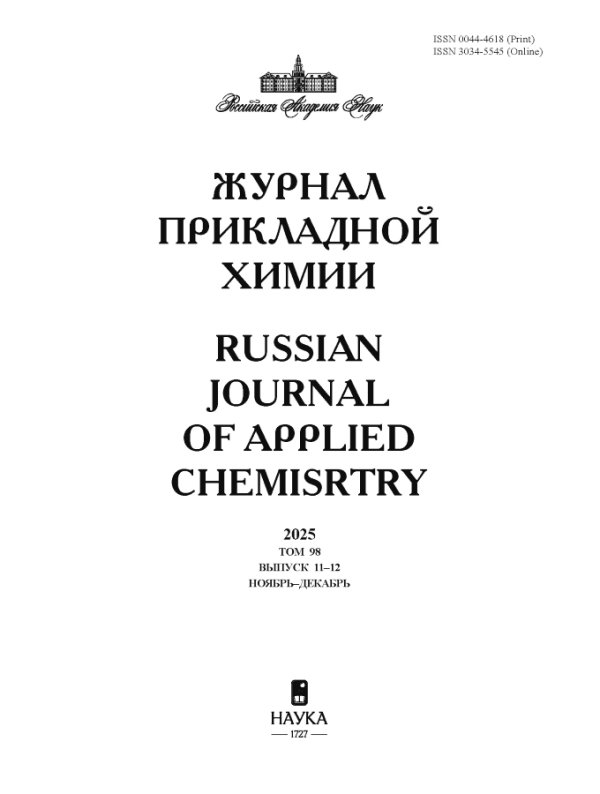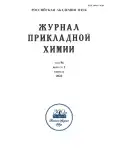Влияние нанодисперсного технического углерода на агрегативную устойчивость бутадиен-стирольного латекса при жидкофазном наполнении в ультразвуковом поле
- Авторы: Корчагин В.И1, Протасов А.В1, Киселев И.С1
-
Учреждения:
- Воронежский государственный университет инженерных технологий
- Выпуск: Том 96, № 2 (2023)
- Страницы: 169-176
- Раздел: Статьи
- URL: https://journals.rcsi.science/0044-4618/article/view/247275
- DOI: https://doi.org/10.31857/S0044461823020056
- EDN: https://elibrary.ru/OUKKVP
- ID: 247275
Цитировать
Полный текст
Аннотация
Изучены факторы влияния морфологии дисперсных частиц, сорбционной способности и кислородсодержащих групп технического углерода на дестабилизацию латекса эмульсионного каучука СКС-30АРК при жидкофазном наполнении нанодисперсным техническим углеродом в ультразвуковом поле. Показано, что нарушение агрегативной устойчивости латекса происходит в результате сорбции техническим углеродом эмульгирующих агентов с защитной поверхности латексных глобул, что косвенно подтверждается повышением коэффициента поверхностного натяжения латексной системы. Установлено, что полная коагуляция бутадиен-стирольного латекса достигается без применения коагулирующих агентов в процессе жидкофазного наполнения техническим углеродом при соотношении компонентов технический углерод:каучук = 100:100 (мас. ч.) и рН ≤ 4.3 с использованием технического углерода К354, а в случае использования технического углерода П324 при соотношении компонентов технический углерод:каучук = 100:100 (мас. ч.) и рН ≤ 3.6. Жидкофазное наполнение эмульсионных каучуков на стадии их выделения из латекса обеспечивает равномерное распределение нанодисперсного технического углерода по объему эластомерной композиции за счет диспергирующего действия эмульгирующих компонентов латекса, которые мигрируют с поверхности латексных глобул на развитую активную поверхность технического углерода в результате воздействия ультразвукового поля.
Об авторах
В. И Корчагин
Воронежский государственный университет инженерных технологий
Email: acjournal.nauka.nw@yandex.ru
394000, Voronezh, Russia
А. В Протасов
Воронежский государственный университет инженерных технологий
Email: acjournal.nauka.nw@yandex.ru
394000, Voronezh, Russia
И. С Киселев
Воронежский государственный университет инженерных технологий
Автор, ответственный за переписку.
Email: acjournal.nauka.nw@yandex.ru
394000, Voronezh, Russia
Список литературы
- Пат. РФ 2640522 (опубл. 2018). Способ изготовления наполненного высокоактивным техуглеродом каучука.
- Береснев В. Н., Крайник И. И., Баранец И. В., Агибалова Л. В. Влияние диспергатора лейканола на агрегативную устойчивость синтетических латексов // ЖПХ. 2018. Т. 91. № 7. С. 998-1006. https://doi.org/10.1134/S0044461818070101
- Крайник И. И., Береснев В. Н., Агибалова Л. В., Курова А. В. К вопросу о стабильности полимер-мономерных частиц синтетических латексов // ЖПХ. 2018. Т. 91. № 10 С. 1449-1461. https://doi.org/10.1134/S0044461818100092
- Один А. П., Рачинский А. В. Усовершенствованный метод выделения эмульсионных бутадиен-стирольных каучуков с использованием органических коагулянтов // Каучук и резина. 2009. № 3. С. 2-4. https://www.elibrary.ru/tachnn
- Вережников В.Н., Никулин С.С., Зорина А.В., Ермолаева А.К., Кретинина Н.И. Влияние механической обработки на агрегативную устойчивость латекса и расход коагулянтов при выделении каучука // ЖПХ. 2016. Т. 89. № 10. С. 1345-1350. https://www.elibrary.ru/owurhu
- Кошевар В. Д., Кажуро И. П. Агрегативная устойчивость водных дисперсий минеральных порошков в латексах // Лакокрасоч. материалы и их применение. 2021. № 5. С. 10-18. https://www.elibrary.ru/gvkxzy
- Корчагин В. И., Киселев И. C., Челноков П. А., Протасов А. В., Мальцев М. В. Жидкофазное наполнение печным техуглеродом бутадиен-стирольных каучуков в ультразвуком поле // Каучук и резина. 2022. Т. 81. № 3. С. 128-131. https://doi.org/10.47664/0022-9466-2022-81-3-128-131
- Гюльмисарян Т. Г., Капустин В. М., Левенберг И. П. Технический углерод: морфология, свойства, производство. М.: Каучук и Резина, 2017. 586 с.
- Моисеевская Г. В., Раздьяконова Г. И., Петин А. А. Новый высокоструктурный технический углерод серии ОМСАRВ для снижения гистерезиса в резине. Ч. 1. Особенности строения и свойства технического углерода // Каучук и резина. 2016. № 2. С. 36-40. https://www.elibrary.ru/vxgmkx
- Чалый А. Е., Герасимов В. К., Горшкова О. В. Матвеева В. В. Фрактальная размерность саженаполненных полимеров и эластомеров // Каучук и резина. 2017. Т. 76. № 3. С. 138-143. https://www.elibrary.ru/ZCRLQN
Дополнительные файлы










